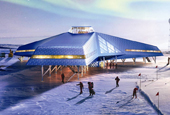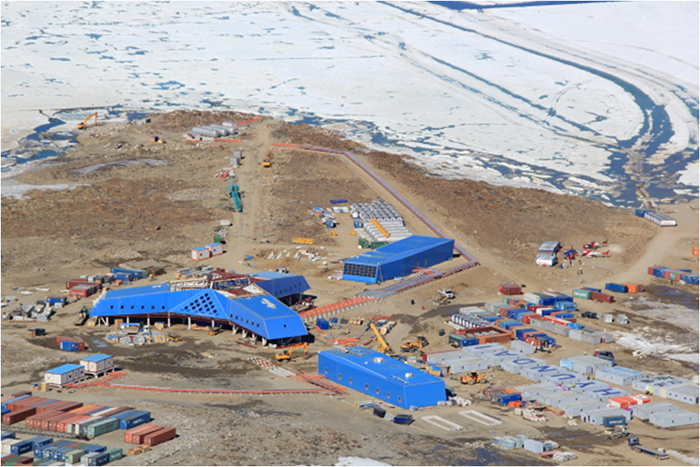
The Jang Bogo Antarctic Research Station, Korea’s second Antarctic base, will open on February 12 in Terra Nova Bay, Victoria Land, in the southeastern part of Antarctica. (Photo courtesy of the Korea Polar Research Institute)
"The Jang Bogo Antarctic Research Station will be open for joint research with international scholars," said President of the Korea Polar Research Institute (KOPRI) Kim Yeadong at a press conference on February 6.
The press conference was held at the Foreign Press Center Korea in Seoul to announce the completion of Korea’s second Antarctic base, the Jang Bogo Antarctic Research Station. The press conference was jointly held by the Ministry of Oceans and Fisheries (MOF) and the KOPRI.
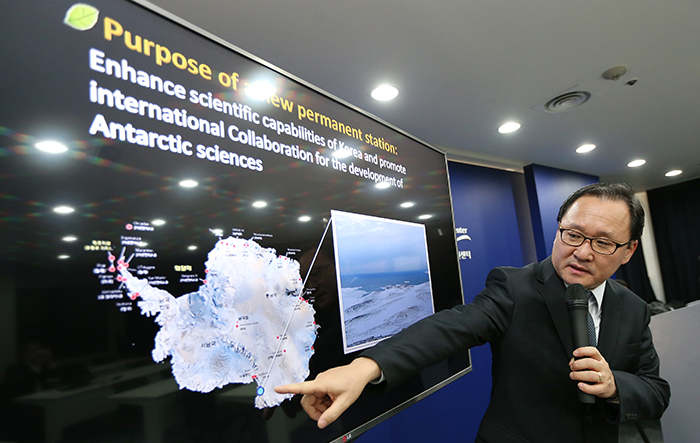
KOPRI President Kim Yeadong explains the location of the Jang Bogo Antarctic Research Station during the press conference in Seoul on February 6. (Photo: Jeon Han)
“Thanks to the Jang Bogo Antarctic Research Station, we will be able to conduct a wider range of research in the southern polar region,” said KOPRI President Kim Yeadong at the meeting. “This station is located on the Antarctic continent, enabling us to focus more on geographic research, including meteorites and glaciers, unlike the existing Antarctic King Sejong Station which is located on King George Island,” Kim said. He emphasized that the Jang Bogo Antarctic Research Station will leave its doors open for joint research with international scholars, hoping that Korea will contribute to the international community with its second Antarctic base.
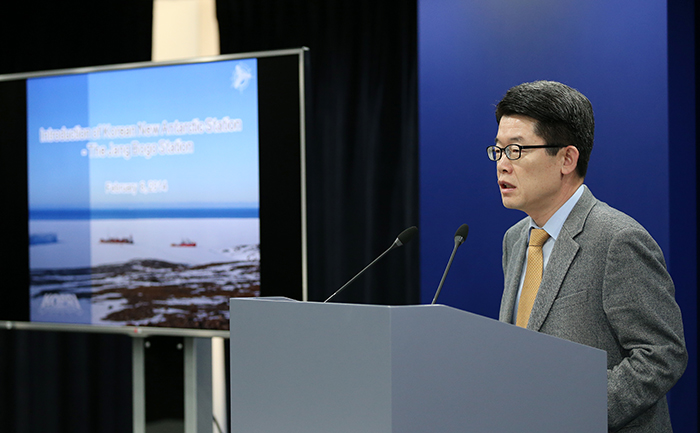
Director General of the MOF’s Marine Industry Policy Bureau Kim Yangsoo talks about the new Jang Bogo Antarctic Research Station during the press conference in Seoul. (Photo: Jeon Han)
Director General of the MOF’s Marine Industry Policy Bureau Kim Yangsoo said that the Jang Bogo Antarctic Research Station will be able to accommodate as many as 60 people at once in its 16 buildings spread across a 4.5-square-kilometer area. “The station is considered to be a ‘clean’ base, as it will be built with environmentally-friendly construction materials and is equipped with solar and wind power,” he said.
“The base will move Korea’s polar research up a notch, allowing for joint research with the RV Araon, Korea’s first icebreaker. Based on the results of various polar research conducted at the base, we will be able to make models of changes in the Antarctic environment and any possible future effects these may have on the future of the human race. This will allow us to present possible alternatives and, by doing so, we will do our best to contribute to the international community,” Kim added.
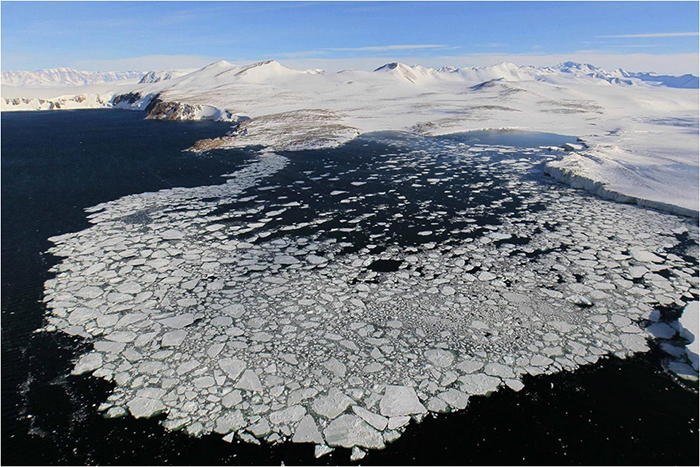
An aerial view of Terra Nova Bay at the southeastern tip of the Antarctic where the Jang Bogo Antarctic Research Station will be built. (Photo courtesy of the Korea Polar Research Institute)
The Jang Bogo Antarctic Research Station is designed in a “fluid dynamic” manner in order to face the tough weather conditions in the Antarctic. It can withstand temperatures as cold as minus 40 Celsius and strong winds that blow at speeds of up to 65 meters per second. The base will open on February 12 after its 21-month-long construction began in December 2012.
By Jeon Han, Yoon Sojung
Korea.net Staff Writers
hanjeon@korea.kr
